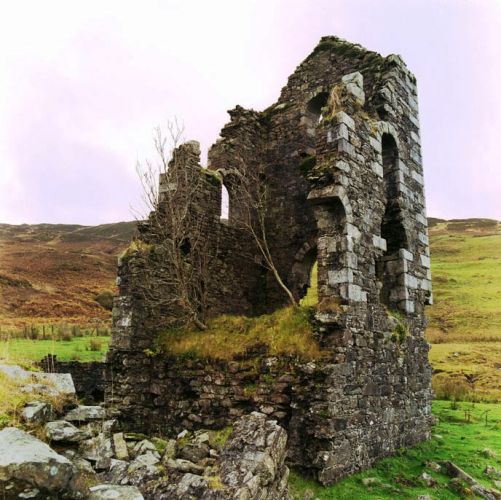
Pibble Engine House
Copyright © John Pickin and licensed for reuse under this Creative Commons Licence
Pibble mine, Creetown, Dumfries and Galloway
NGR: NX 528 604
Pibble mine is a short-lived nineteenth century copper and lead mine in the hills above Creetown. It was worked by the Creetown Copper and Lead Mining Company from 1849-55 and during this period produced 214 tons of copper, 29 tons of lead and a small amount of silver. Up to 36 men, women and boys worked at the mine and the mine manager or captain was a Cornishman.
Due to its isolated location the mine is particularly well preserved and is now a Scheduled Ancient Monument. Remains on site include a series of levels and associated spoil tips, an ore bin and hand-dressing area, a Cornish pumping engine, a reservoir and dam and a water-powered crushing mill. The engine house, which was built in 1852 for a beam engine purchased from the St Austell Foundry in Cornwall, is unique in south-west Scotland and one of only two engine houses surviving at Scottish metal mines – the other is at Mulreesh, Isaly. The bob wall of the engine house has collapsed but the rest of the structure, including the boiler house, is complete.
The ore was crushed on site. There was a small harbour at Palnure near Newton Stewart and it is likely that lead ore from the mine was shipped to Deeside for smelting. Copper ore was probably taken to Anglesey or Swansea for smelting.
Return to previous page
